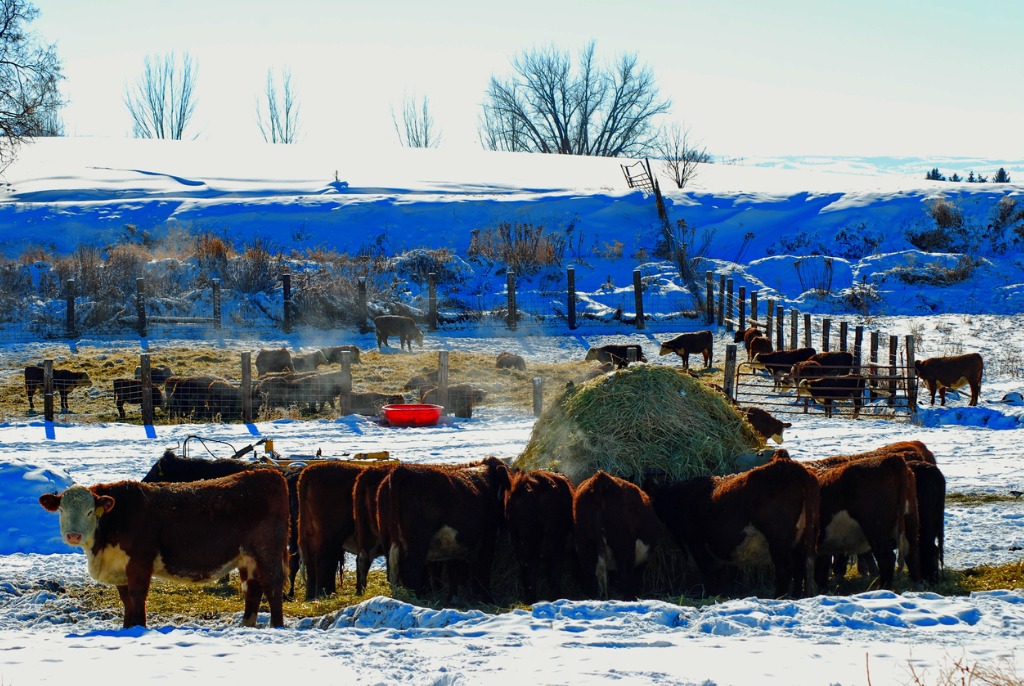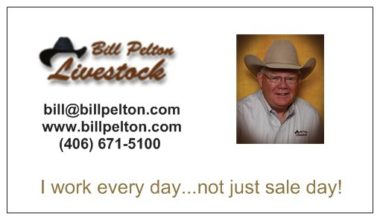The energy reserves of a herd are a direct correlation to nutrient supply and balance. Feed prices account for greater than 60% of South Dakota producers’ annual operating expense, so it becomes critical for producers to understand how to evaluate and manage the energy reserves of a beef cattle herd.
Body Condition Score
Body condition scoring (BCS) is a means of analyzing the energy reserves of an animal. Beef cattle are scored on a 9-point scale with 1 being extremely emaciated and 9 being extremely obese. Typically the change of 1 BCS point is the equivalent of 75 to 100 pounds of body weight, dependent on frame score. Smaller framed animals will change 1 BCS with fewer pounds than a larger framed animal.
Ideally, cows should be body condition scored several times throughout the year to evaluate the nutritional status of the herd. There are five key times to observe and make management decisions regarding body condition score; breeding, 60-days prior to weaning, weaning, late lactation and calving. By observing and recording BCS during these key times, management decisions can be made to help ensure that adequate BCS at calving is achieved at the most economical level. By body condition scoring at the time points outlined above, one can evaluate the direction the herd is moving and whether cows would benefit from a nutritional change.
Managing Body Condition Score
One of the most critical times to determine energy reserves of a herd is at weaning. This is the easiest and subsequently most economical time to improve BCS. At weaning, the nutrient demands of lactation are removed and the needs of the growing fetus are not significant; therefore, at this point in the production cycle, the nutritional needs of the female are the lowest (Table 1). For example, a 1,200-pound cow in mid-gestation after weaning will have a reduction of 15% in energy and 32% in protein requirements compared to a lactating cow. Ideally, after BCS at weaning, cows should be sorted into feeding groups based on their BCS. First calf heifers, thin, and old cows can be managed as one group allowing producers to meet the increased nutritional demands of these females without excess expense for the entire herd. Cows that are in a BCS of 5 or greater can be placed on a maintenance ration until calving. If group feeding is not an option, producers have one of two choices: over feed the cows in good BCS to improve the BCS of thin cows, thereby meeting increased needs of young cows or under feed young and thin cows, allowing their BCS to continue to decline. Both choices could have negative economic ramifications.
Managing BCS after weaning and into late gestation is critical because BCS at calving has a greater impact on subsequent fertility than BCS following calving, regardless of body weight gained after calving. Research has revealed that cattle are most reproductively efficient when they calve with a body mass index of approximately 18.9% body fat which corresponds to a BCS of 5. When females fall below 15% body fat (BCS 4), they are more likely to become anestrus (stop cycling). Therefore, it is imperative that cows are managed to calve at a BCS of 5 to ensure optimum reproductive performance.
| Production Phase | ||||||
| Lactating cow, first 90 days after calving | ||||||
| Gestating cow, middle 1/3 of pregnancy | ||||||
| Gestating cow, last 1/3 of pregnancy | ||||||
*Requirements reported on a dry matter basis.
Lalman, D., Richards, C. Nutrient Requirements of Beef Cattle E-974. March 2017.
How Important Is It?
When you compare cows that calved at BCS of 4 or less to cows that calved at a BCS of 5 or greater, there are tremendous differences in the length of their postpartum interval (time from calving until females start to cycle again) (Table 2) and overall pregnancy rates (Table 3). The goal should be to have a cow calve every 365 days and in order for her to do this, she has to rebreed within 82 days of calving. Typically, the first heat is silent therefore if she doesn’t start cycling until day 70 at a BCS of 4, she does not have a chance to rebreed within that 82-day period. Subsequently, if it takes longer to start cycling, there are fewer opportunities to get bred, resulting in decreased pregnancy rate.
Body condition scoring is a practical tool that is simple to implement and allows producers to analyze the energy reserves of their herd and manage winter feeding accordingly. Managing your cows to calve at a BCS of 5 or greater will help ensure a successful breeding season next year.
at Calving |
Interval*, Days |
|---|---|
*Postpartum interval is the time from calving to first heat following calving. Houghton et al., 1986. Purdue University
at Calving |
|
|---|---|
This represents an update of an article originally written by Kalyn Waters, former SDSU Extension Cow-Calf Field Specialist.











